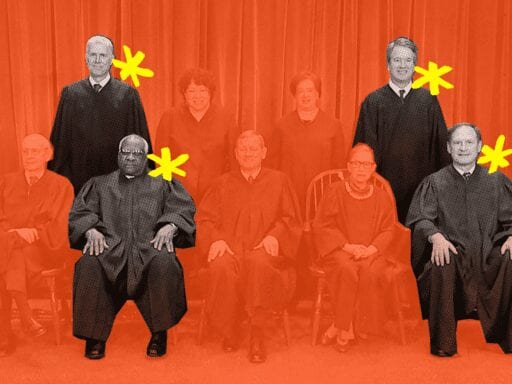Minority rule has reached the highest court in the land.
The confirmation of Supreme Court Justice Clarence Thomas, back in 1991, was a squeaker: 52 yeas, 48 nays — the narrowest margin in over a century.
The senators who voted to put him on the bench had won their most recent elections with a combined tally of 42 million votes. But the senators who voted “nay” were elected by 46 million. Thomas became the first Supreme Court justice to be confirmed by a bloc of senators who had been elected by a minority of voters.
Then it happened again. And again and again. The senators who confirmed Justices Samuel Alito, Neil Gorsuch, and Brett Kavanaugh received millions fewer votes than the senators who opposed their confirmations.
Ruth Bader Ginsburg’s replacement seems certain to join the ranks of these “minority justices.” Even if Trump’s nominee wins the support of every Republican senator, including moderate hold-outs like Lisa Murkowski and Susan Collins, all those senators combined received 13 million fewer votes than their colleagues across the aisle.
With this new confirmation, the Supreme Court will enter a particularly undemocratic new era. For the first time since senators were directly elected, a controlling majority of the court will have been put there by senators who most voters didn’t choose. (And of course, the last three will have been nominated by a president who lost the popular vote by nearly 3 million votes.)
The Senate has always been one of the federal government’s least democratic institutions. Each state — big and small — gets two senators. That means Sen. Bernie Sanders of Vermont has as much say about who goes on the Supreme Court as Sen. Ted Cruz of Texas, even though Sanders represents about 600,000 people, and Cruz represents 29 million.
It also means the smallest 25 states — home to only about 15 percent of the US population — have as much power as the 25 biggest. And that’s not new; half the Senate has always represented about 15-25 percent of the population.
And yet, for most of the Senate’s history, majority rule has endured. Traditions of civility and compromise, along with self-imposed rules like the filibuster, meant that most legislation was passed by a group of senators who represented a majority of the nation. Most Supreme Court justices were confirmed by large bipartisan majorities — like Ruth Bader Ginsburg (96 yeas, 3 nays).
But in the past few decades, things have changed. The nation has become more polarized, confirmation votes have become much closer, and Senate norms have been abandoned.
At the same time, Democrats are increasingly concentrated in larger states, giving the GOP a leg up in the Senate. Democrats control a majority of seats (26-24) in the 25 most populous states. Republicans however, have a much larger majority (29-21) in the 25 least populous states. Back in 1980, the average Republican voter had 6 percent more power in the Senate than the average Democratic voter. That advantage has grown to 14 percent.
/cdn.vox-cdn.com/uploads/chorus_asset/file/21912815/DV_SlopeChart_Senate_v2.gif) Whose vote counts, Explained/Netflix
Whose vote counts, Explained/NetflixThis imbalanced Senate has created the least democratic Supreme Court in modern history.
Author: Adam Cole
Read More



